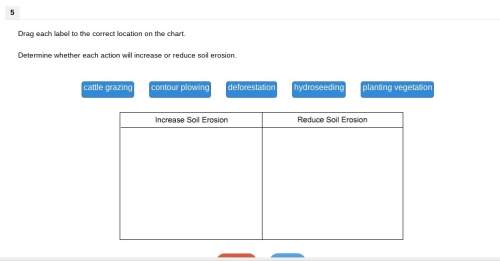
Biology, 27.12.2019 07:31 erickasmith1988
The average, year-after-year conditions of temperature, precipitation, winds, and cloud in an area are known as its a. climate. b. weather. c. global warming. d. seasons.

Answers: 1


Other questions on the subject: Biology

Biology, 21.06.2019 23:00, gthif6088
The tasmanian devil, a marsupial carnivore, is facing extinction due to devil facial tumor disease (dftd) which causes bulging cancerous lumps and lesions to erupt around the face and neck — often causing enough deformation to make seeing or eating difficult. dftd has evolved into a contagious cancer, a trait that is unique among cancers. devil mating behavior involves biting around the head and neck, allowing cells from one individual — especially cells from the crumbly dftd tumors — to be transferred to the wounds or face of a new individual. this marsupial was once found across australia, but sea levels rose, isolating the tasmanian population, while the australian population went extinct. what would be an outcome of genetic isolation that is likely to have impacted the spread of dftd? a) reduced territory puts diseased individuals in greater contact with non-diseased ones. b) inbreeding results in less variation in facial features so the cancer is generally fatal. c) genetic isolation has made it difficult for scientists to develop a vaccine against dftd. d) the lack of genetic variation in the immune system of tasmanian devils minimizes resistance to the disease.
Answers: 3


Biology, 22.06.2019 01:30, netflixacc0107
Which of these best describes what occurs during cytokinesis? a) the chromosomes are separated b) the cell begins to divide by replicating the chromosomes c) the cytoplasm is divided between the two new daughter cells d) the nucleus opens to allow the chromosomes to enter the cytoplasm
Answers: 1

Biology, 22.06.2019 11:30, cr22estiles
What would most likely happen if green plants were exposed to longer days of sunlight? a. the mitochondria would produce less energy . b. the chloroplasts would produce more energy. c. the cell wall would become thicker. d. the vacuoles would quickly shrink. b. the chloroplasts would produce more energy.
Answers: 3
You know the right answer?
The average, year-after-year conditions of temperature, precipitation, winds, and cloud in an area a...
Questions in other subjects:

Biology, 11.09.2019 23:20












